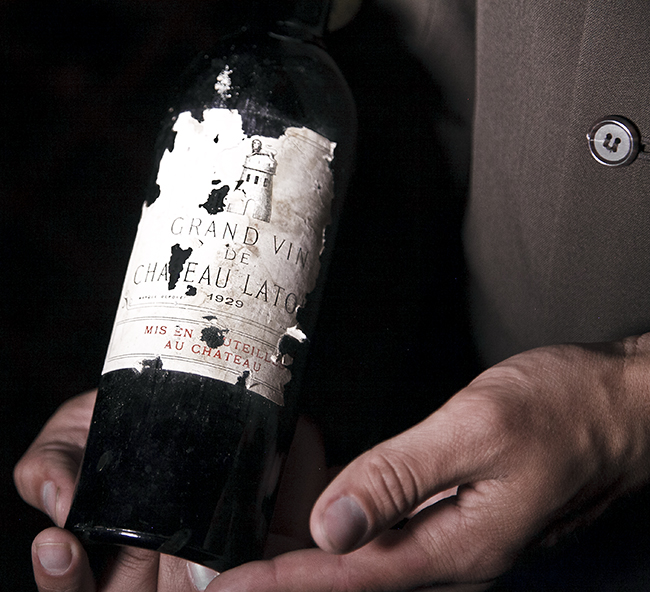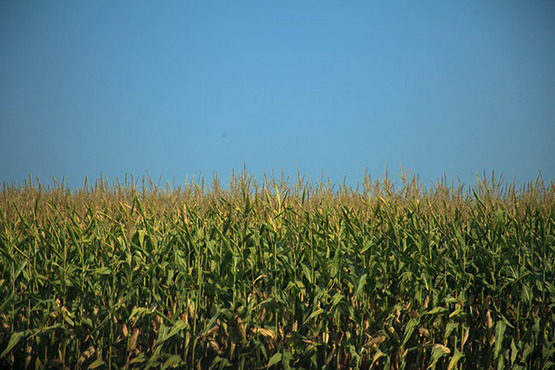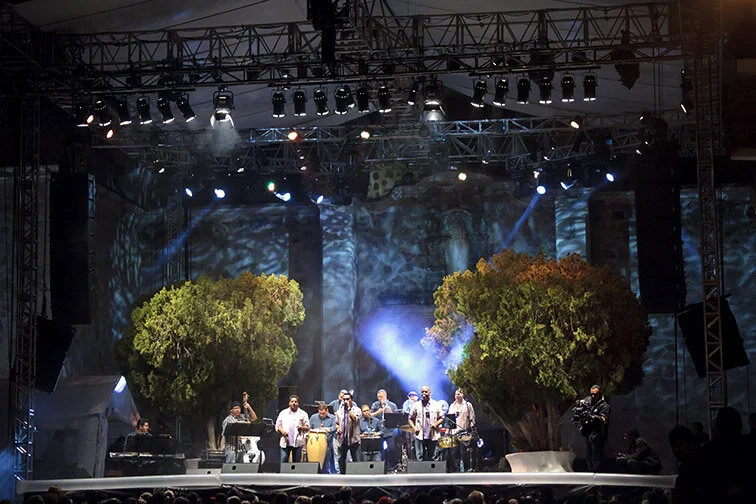Watch the performance that transformed a flamenco naysayer into a fan in this visual video travel story by writer-photographer Paul Ross.
A Foodie's Iran: 2 Authentic Recipes You Can Make Right Now
by Paul Ross
Warned not to go, I followed my appetite to Iran and have returned home filled with beautiful memories, blessed with new friends, and brimming with the desire to show and tell, taste and smell, and surprise all those who never expected to see me again.
Editor's Note: This article is part of a new series by writer-photographer Paul Ross featuring field-tested reviews of places, products and services that enhance the travel experience. All are evaluated honestly. If something is just bad, he won’t write about it. If it's really bad, or darn right dangerous, he will warn you.
Story and photos by Paul Ross
This year I decided to celebrate my birthday early in San Francisco.
As an AARP-certified senior, it’s years since I’ve been festive about my natal day and even longer since I’ve visited “Baghdad-by-the-bay” (coined in the 1940’s by San Francisco columnist Herb Caen). Growing up in Southern California, I osmotically acquired a slight sense of residual rivalry toward Frisco. We had sun, surf, sand, and they had fog, cold, and business. As an adult, I figured it was time to explore what many locals call “the City” had to offer.
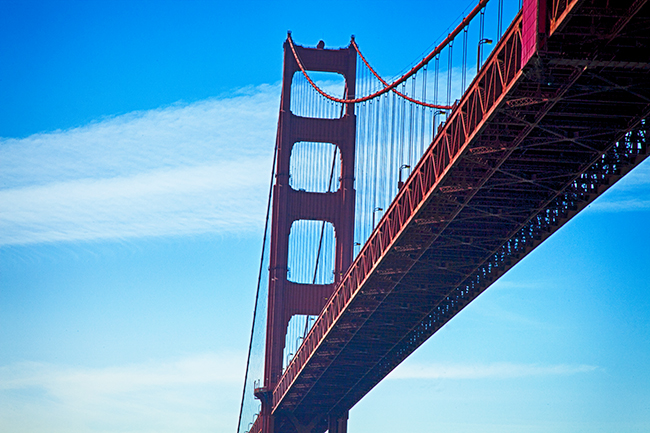 The Golden Gate Bridge. (The only ways to get this particular view are swim, jump or take a bay cruise. I recommend the last.)
The Golden Gate Bridge. (The only ways to get this particular view are swim, jump or take a bay cruise. I recommend the last.)
BAY AREA CLASSIC
I decided to start out with a Bay Area classic: the venerated Mark Hopkins hotel atop elegant Nob Hill via cable-car-carrying California Street. The hotel features a museum of the hotel’s colorful history from its Victorian era founding through its heyday housing of celebrity guests; their favorite watering hole was the Top of the Mark with its almost 360 degree view.
I was fascinated by nostalgia-laced mementos and exhibits, like a video interview with a nonagenarian who was once a nude model and photos of the big bands that had played there. “The City” preserves her majesty in ornate buildings and cable cars, one of which I rode down to Chinatown, while vowing to hike back up the really steep slope to work off Sum of my Dim dumplings.
When, on a family vacation, I first went to Chinatown as a kid, my grandfather took us all to a restaurant frequented by Danny Kaye, so of course I had a yen to go back. Located on heavily touristic Grant Avenue, the food is so tired that it could’ve been leftovers from Kaye’s days. But when I walked a few blocks from Grant to Jackson Street, I discovered Z & Y, which, despite its bland name, featured hot and spicy Szechuan delights I never dreamed of as an L.A. boy. Z&Y is on the same block as the P&R and the ABC restaurants and is as easy to find as 1,2,3.
Editor's Note: This is the first article in a new series by contributor Paul Ross featuring field-tested reviews of places, products and services that enhance the travel experience. All are evaluated honestly. If something is just bad, he won’t write about it. If it's really bad, or darn right dangerous, he will warn you.
Here’s what he's found for you this time:
- One vintage California hotel with a retro restaurant and a speakeasy bar.
- One steal of a deal at a top eatery in Santa Fe, New Mexico, that’s ideal for celebrating anything.
- Two pieces of gear: an easy, convenient and affordable way to communicate while overseas, and a compact, dedicated, hi-def time-lapse camera for less than $300.
by Paul Ross
California Retro
Part of my cred as a native Angeleno is that the hospital where I was born has been torn down. I lived a lot of my life in the crawling sprawl of that city. I can’t really say I grew up there because showbiz’s youth obsession has always eschewed “growing up.” Los Angeles is where history barely clings to the margins and a restaurant can boast without irony that it’s been “a tradition since this afternoon.”
I love the rarity of the Big Orange’s old buildings that survive in the corners of reinvention central. The Georgian (www.Georgianhotel.com) is just such a place; her face is a blend of Romanesque Revival and Art Deco and, like many in Southern California, she’s had a few cosmetic touchups over the years. For one who is now celebrating her 8th decade, the old girl looks pretty good.
As a nostalgic anniversary nod, the indoor restaurant and the veranda with a view of the Pacific Ocean are offering a ”Prohibition Era” menu that includes both historic cocktails and vintage culinary specialties. Among the classic imbibables are a French 75 (sparkling wine & gin), the martini-esque Negroni, the whisky-based Manhattan and Rob Roy and a harken-back-to-Hollywood’s heyday Brown Derby (bourbon, grapefruit juice and honey). All of these are in the $9 to $12 range. After sipping a couple samples, and eating bygone staples like the Monte Cristo sandwich and Waldorf salad, I was glowing like the sunset and sinking into the woven wicker chair.
Once the sun was down, I wandered inside the hotel, where deco design furnishings graced the lobby. Somewhere there was music: Sinatra, Satchmo, Cole Porter, show tunes.
“ ’want to see our secret surprise?” the bartender asked.
story and photos by Paul Ross
“I would do anything for love, but I won’t
dance, don’t ask me.”
-Meatloaf & Fred Astaire
I’m an American baby boomer who doesn’t dance. It was an awkward social activity for a lot of guys in my generation and the excuse for not doing so was that I was always playing in bands –for other people’s dancing. The story is plausible because it’s partly true. But, somehow, there I was, salsa’ing mi cola off at midnight in Medellin, Colombia.
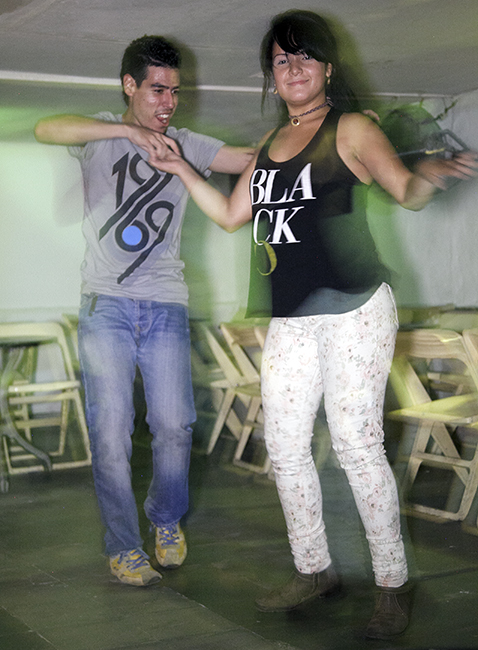 Salsa dancers, Medellin, Colombia.
Salsa dancers, Medellin, Colombia.
HOW DID THIS HAPPEN?
Flashback ––
Arriving in the capital city, Bogota, in search of stories with my wife and travel partner Judie, Chef Sofia Samper whisked us like compliant egg whites off to a large local market. There she shopped for select delicacies to be incorporated into a custom lunch at her cooking school/restaurant. Music thumped in the background throughout the marketplace.
During the subsequent lesson in Colombian cuisine at trendy Casa 95, Chef Sofia danced around her kitchen to an infectious Latin beat. And I began tapping my toe.
story and photos by Paul Ross
I suppose that, like most people, topping my “What if..?” fantasy list is the question, “What if I had a lot of money?”–So much money, that not only would I not have to worry about it, I would never even have to think about what I spent. What would I do with those kinds of assets? Support charities? Fund politicians? Gamble (and I include the stock market)? Or just buy a lot of stuff? And what form might the purchasing take? I already travel, so-- Cars? Clothes? Jewelry? Boats and planes? Art?
In this last category, I had a chance to see what that indulgence might look like at the Nemacolin Woodlands Resort in the Laurel Highlands region of Pennsylvania. Grillionaire Joseph A. Hardy made megabucks through 84 Lumber, his building supply chain store. I didn’t meet the man but, from what I heard, what I saw in images of him scattered throughout the expansive property and the nature of the complex itself, I got an impression: big, brash, determined, impulsive, self-motivated, assured beyond surety, independent and generous; in short, a real American. Let me paint the picture for you from what I experienced. See if you get the same mental image.
story and photos by Paul Ross
Getting to Myanmar (Burma) is a trip, but getting around while in-country can be an adventure.
During 18 days of travel, we rode in human-pedaled trishaws, rickety horse-drawn carriages, vintage trains, and boats of every imaginable size, shape and color. Squeezed into crowded truck-busses, we joined indigenous commuters, and used the smattering of Burmese phrases we picked up along the way to interact and become part of their day. In turn, they became part of our memories.
Much more than transportation, these conveyances provided an intimate glimpse of everyday life, a profound sense of place, and an authentic connection to this rapidly changing country.
Traveling with Eldertreks, an adventure travel company for travelers 50 and older, my wife, Judie, and I were able to step outside the tourist bubble and travel with the locals.
Here's the visual proof.
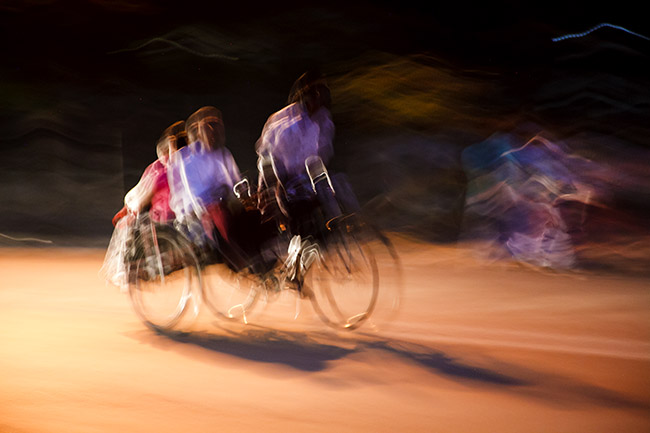
An old converted bicycle, with its five-inch seat not constructed with wide-beamed Americans in mind, and a bumpy dirt road make for a colorful experience, especially if you add in the black and blue marks on your backside. The peddler/driver's friend rode along, balancing on the bike's peg, as either a human GPS or a spare "engine." Far from "the days of Raj" luxury (the Brits colonized Myanmar as well as India), the trishaw is a practical taxi in a bustling, developing country and ––like all taxis everywhere–– it's best to negotiate the fare in advance of the trip. You want to help the local economy but--
story and photos by Paul Ross
It was my first foray from Santa Fe, New Mexico, up South Dakota way and one my few experiences in the Midwest, “America’s heartland,” which is derisively included by bicoastal media under the broad heading of “flyover country.” Almost immediately, I sensed something was wrong. I couldn’t put my finger on it but there was an element missing. I didn’t need my urban-honed 360o hyper-awareness ...’cause, generally, I wasn’t in any big city in South Dakota; I was just surrounded by miles and miles of flat agriculture: corn, soybeans, hogs –NYSE commodities literally on the hoof. I didn’t have a problem with it, because it was what I’d expected. It was with the people. They smiled and audibly said “Hi” on the street –to a stranger -for no discernible reason!
At an annual charity affair –the McCrossen Boys’ Ranch Extreme Event Challenge Rodeo-- the best place from which to shoot photos was secured behind doubled fences. So I tried a big city ploy and walked in like I belonged. It worked, until Cindy Menning, THE woman in charge, approached. I mentally prepared a barrage of important credentials with which to snow, or at least impress, her. But, instead of a challenge, she offered access to an even better vantage point –right atop the chutes where professional bull riders dropped down onto their ¾ ton mounts.
No questions were asked, just friendly help extended.
story + photos by Paul Ross
(*warning: contains no photos of Paris)
There are just too many photo contests out there. Most of them are meaningless –except to those running the competition and collecting fees.
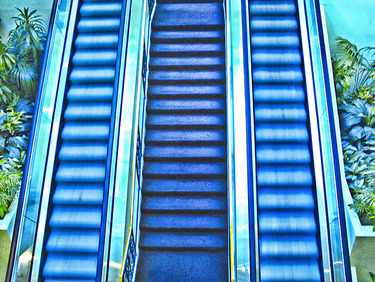 The winners sometimes get gear and money but --with lottery-like odds-- the payoff is more often mere bragging rights and having your work displayed in cyberspace, which is the electronic equivalent of being tacked-up on a refrigerator.
The winners sometimes get gear and money but --with lottery-like odds-- the payoff is more often mere bragging rights and having your work displayed in cyberspace, which is the electronic equivalent of being tacked-up on a refrigerator.
In spite of all the preceding, when my wife found and forwarded one notice, the competition caught my eye. “Capture the Colour” (the contest is Brit-based) has separate judges for images concentrated around each of five hues: red, white, green, blue and yellow. Given my opinion that many in the photo world are enslaved by the unwritten artistic law that serious photography is B&W, this contest had instant appeal. It got me thinking, and not just about my own photos.
Consider the topic: colors are more than the result of physics and its interaction with human anatomy. They’re emotional. Psychologists and marketers would tell you that blue is “cool,” white is “clean” and red “passionate.” At least in our contemporary society. In other cultures and in other times and places, it’s different. Among some Native Americans, certain colors are linked to the cardinal directions (North= white, West=black, South=yellow and East=red). In Christian traditions, white stood for purity, red signaled blood and, borrowing from the Roman Empire that alternately repressed and embraced the church, the color purple was royal.
The Ghosts of Alamos
story and photos by Paul Ross
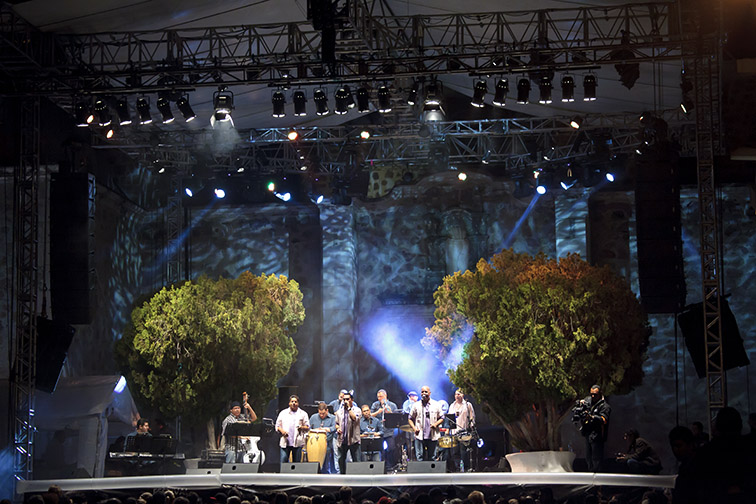
A Puerto Rican band rocks the house on one of Alamos' festival stages.Ever since I was a kid, I liked ghost stories. Not “the hook on the car door in lovers’ lane” or “the vanishing trucker” or any of the urban legends. I sought out the real thing: incidents that were chronicled in books by the likes of Jess Stern, with detailed footnotes and reports from reliable witnesses such as cops, soldiers and, my personal favorite, dumbfounded scientists who were “left at a complete loss for explanation.” Years later, “The X Files” mined similar territory but, by then, I’d moved far from any fiction into field research. I’d contributed to esoteric –yet rigorously grounded- publications like “The Fortean Times – The (British) Journal of Strange Phenomena.” I interviewed people who’d had supernatural encounters, personally photographed numerous haunted spots and even stayed in what was purported to be America’s most ghostly hotel. (2 nights: I saw nothing and left dispirited.)
The funny thing is, even if the prey is ghosts, when you’re actively hunting them, they’re nowhere to be found BUT, when you least expect it -
Recently, I was on assignment in Sonora, Mexico. I’d never been to the specific region and was looking for culture, music, cuisine, genuiness and exotica. I didn’t know I’d find my passion.
words + slideshow by Paul Ross
I’ve seen most of the oceans of the world from boats big and small, craft commercial and military. I’ve been in a submarine, dove the wall of a 2-mile deep sea trench in the mid-Pacific, watched whales in the Arctic and sunsets on islands, atolls and from shores distant and domestic. But not until recently did I stand at the edge of the ocean and notice that waves have personalities. Some are feminine and lap at or teasingly tickle the beach while others impatiently charge the shore in an alpha male display. There are lofty and proud rollers, menacingly dark gatherers who build and build, creating discomforting uncertainty with their indefinable limit and unfathomable purpose. Some are mere sighs of the sea; indifferently swelling and quelling as if to shrug or just take a momentary look around. Sibling rivalry waves, born of the same mother roll, will playfully clash into each other and collapse into sparkling foam. Stolid workman waves dutifully pound away at rocks in destruction zones even more permanent than those of the streets of New York. Still others are real sports: faking one way, breaking another and nimbly dodging surfers as if they were opposing football players. And there are golf waves with their long impressive drives decelerating to a controlled stop. How ‘bout those NBA ones? Taking their time moving down court, coolly surveying and assessing the scene before exploding in a sudden move.
Health-wise, there are asthmatic waves with long, labored and drawn- out aspirations. Neurotic waves indecisively fall apart in pieces, attempting a regroup even as other sections are curling inward.
Egocentric waves applaud their own performance.
Some are shy, don’t want to be noticed, and aren’t.
by Paul Ross
Remember when you were a kid and some relative dragged you, with the best of intentions, to an historical “re-creation” because it was fun AND educational!? You don’t remember what you learned -- so much for education. And it was only slightly more fun for you than for the poor souls who suffered through the real thing ... because they were so miserable, they didn’t mind dying at age 19 from enlarged pores while semi-skilled barbers attached leeches to their appendages.
Photo Slide Show by Paul Ross
These glossed-over, sanitized, falsely nostalgic, contemporarily cosmetic pseudo-experiences invariably celebrate a time of exploitation. And the POV romantically, religiously and ideologically chosen is from the lowest rung of the social ladder. The idea may be noble, but you are not.
by Paul Ross
A vacation on a large cruise ship is a lot of things: convenient, easy, hassle-free (unpack once!), planned and scheduled, largely affordable, entertaining and unchallenging. You’ll know when, where, with whom and pretty much what you’re going to eat, who won the knobby-knees contest at the aft deck pool between the disco and life raft station zebra and exactly how long the “endless night soiree” will last. What’s not to like? At times, and on specially-themed outings, there are even opportunities to learn something. But, mostly, there is relaxation--especially during those long “days at sea.” Yes, vacation cruising can be many things. But it is not travel.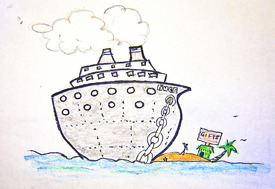 illustration © Paul Ross
illustration © Paul Ross
Travel can include difficulty, surprise, expense (both monetary and personal), challenge and always a chance of the unknown, which necessitates awareness. There are “lessons” aplenty but they’re rarely pre-digested and aren’t spoon-fed. You not only learn about the places and people you visit, but also about yourself.
You’ll have to find eateries on your own and they may be native and weird. Or, as an adult, you might even enjoy a brand new taste sensation. There may be a schedule--which can vanish in the instant it takes to get a blown out tire, be caught in a storm, or meet an unexpected situation or person of interest. Cruising is Disneyland afloat. Travel is what happens behind the scenes, beyond the gates and out in the world. The challenge is real but so are the adventures, discoveries, revelations and delights.


